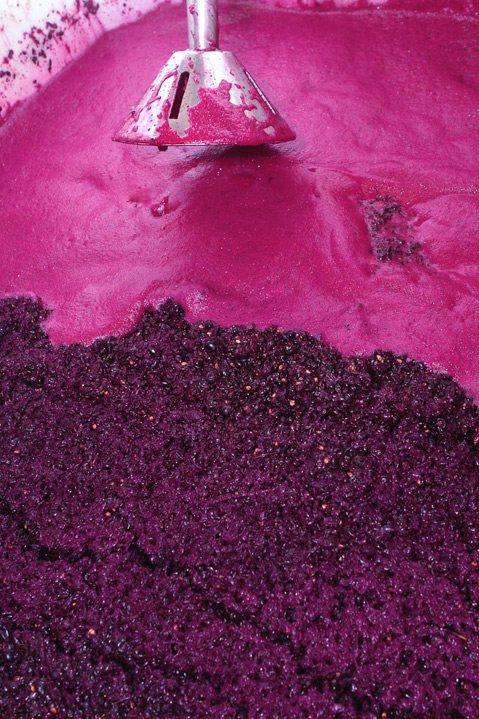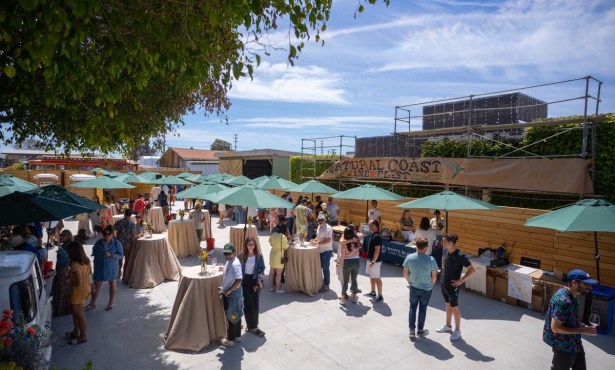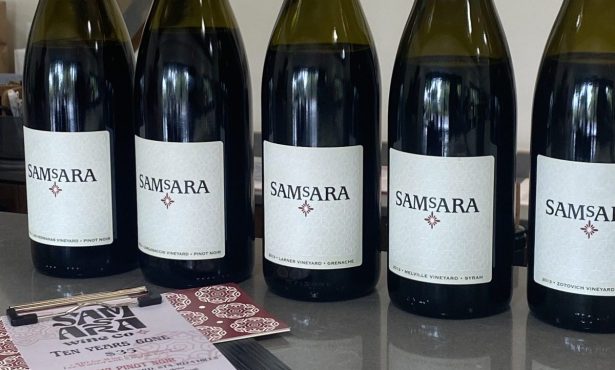Winemakers Go Native
Presqu'ile Winery's Dieter Cronje on the Beauty of Local Yeasts
It’s the poetry of abundance that gets most people giddy at harvest time — the heaping bins of grapes, the culmination of months in the vineyard, the crush. But for me the real thrill comes in the days following, when tanks begin to gurgle and emit their fragrant fumes. At that moment, when the yeasts begin their microscopic celebration, the air vibrates with life.
Fermentation is pure magic. Saccharomyces cereveciae, those invisible yet ever-present little microorganisms, perform a miraculous microbial transformation. They feast, consuming the sugars found in juice, and convert them to alcohol and carbon dioxide. Yeast is hard-partying, but it’s also surprisingly delicate, thriving only within specific environmental conditions. If temperatures are too high or too cool, or if the must is too acidic or alcoholic, they languish and die. And if they do so prior to converting all of the sugars, the result is a stuck fermentation and possible spoilage. Modern-day winemakers typically avoid this situation by adding commercial yeasts.
This addition (what winemakers call “inoculating”) means introducing a dominant strain, specifically formulated to beat out natural microorganisms in the race to the sugar. While they’re sure to get the party started, designer yeasts also contribute specific flavors. So an increasing number of winemakers have begun to work with yeasts present in the air — “going native” — in an effort to more purely express the flavors and textural nuances of the vineyard.

One such winemaker is Dieter Cronje of Presqu’ile in the Santa Maria Valley. During harvest several years ago, the 27-year-old asked himself, “Why buy yeast and add nutrients when it’s readily available, not to mention free?” He performed a few trials and realized that, contrary to popular belief, native ferments were possible and even quite successful. That epiphanous moment, combined with the vision and resources offered by winemaking colleague Matt Murphy, fueled his zeal.
The Murphy family’s beloved gathering place on the Gulf Coast, called Presqu’ile (Creole for “almost an island”), was destroyed during Hurricane Katrina. So when they fell in love with 72 acres in the Santa Maria Valley, they made it the family’s metaphorical island and began planting vineyards. Today, two generations of the Murphy family participate in the bubbling alchemy of Cronje’s native fermentations. And they savor the results.
Cronje is at once magnetic and authentic, and his noninterventionist winemaking ethos demonstrates an almost primitive simplicity. “It’s not like we’re doing anything innovative,” said the South Africa native. “We’re taking techniques that people have used for centuries and using those rather than the modern, which require more intervention in the winery.” Presqu’ile neither fines, nor filters, nor adds anything to the wines besides the requisite sulfur.
In explaining the dynamics of native fermentation, Cronje compares the process to a relay race in which one yeast strain takes the baton and runs for a while before passing it to the next, and on to the next, until the final yeast crosses the finish line and the wine is dry. Allowing this process to take place in stages, he explains, allows each of the strains to contribute their distinct flavors, the result of which is complexity.

Beyond complexity, the wines in Presqu’ile’s current lineup display elegance, and textural intrigue. The 2010 sauvignon blanc reveals minerality and facets of fruit, backed by succulent salinity. The 2009 chardonnay gracefully balances vivacity and old world focus with luxurious new world viscosity. Presqu’ile’s three 2009 pinot noirs — Santa Maria Valley, Rim Rock Vineyard, and Presqu’ile Vineyard — reflect refinement while expressing the distinct characteristics of their vineyard sites. The Presqu’ile Vineyard offering, in particular, is deliciously intellectual.
Every geographical place has its own specific culture of yeast strains that helps define its terroir. Thus, Cronje feels that by allowing native yeasts to perform their microbial metamorphosis he is able to more clearly communicate the vineyard’s essence in liquid form. “It’s the land that is uniquely expressive,” he said with Afrikaner intonation. “Anyone can buy grapes and oak barrels. What makes our wine special is that it tastes like this place.”
4•1•1
Presqu’ile’s Los Olivos tasting room will open in February 2012. The Santa Maria winery will be completed and open to the public in 2013. See presquilewine.com.



